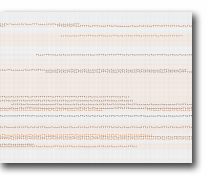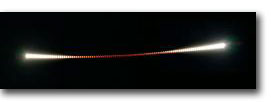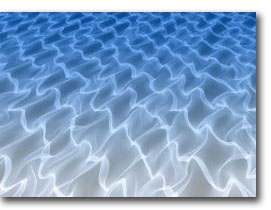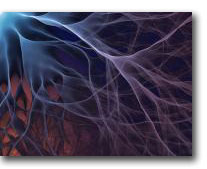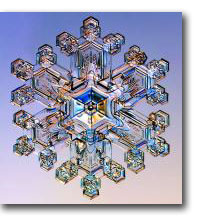One of the most puzzling experiments in quantum physics is the quantum eraser, proposed by Scully and Drühl in 1982 and further implemented in several different settings.
A basic principle of quantum mechanics is complementarity, stating that for each degree of freedom, the dynamical variables are a pair of complementary observables. Being complementary means that precise knowledge of one implies complete unpredictability of the other. For example, precise knowledge of a particle position implies complete unpredictability of its momentum.
An illustration of complementarity is the classic double-slit experiment, where monochromatic light going through a screen with two slits produces wave interference patterns. However, if a device is used to detect photons while they pass through each slit, the interference disappears. This non-classical dual behavior (which is not specific to photons, but common to any particles, atoms and molecules) is observed even when a single particle at a time is sent to the slits, suggesting that it interferes with itself. Knowledge of the particle’s path is complementary to the appearance of a wave interference pattern, and according to the Englert-Greenberger duality relation, D2+V2≤1 (where D is the distinguishability of paths from 0 to 1 and V is the visibility of the interference pattern from 0 to 1).
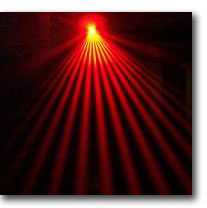
It has been considered that the general mechanism responsible for the loss of the interference pattern is the uncertainty principle, as no measure can be so delicate not to disturb the system which is measuring. However, in this experiment, the “which-way” information of the particles is found without disturbing their wavefunction. The reason of the interference loss is the quantum information contained in the measuring apparatus, by means of the entanglement correlations between the particles and the path detectors. The experiment shows that if such quantum information is afterwards erased from the system, then the interference reappears (which would be impossible in the case of a perturbation).
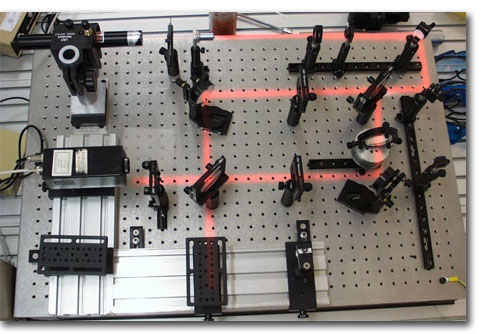
The original setting of the experiment involved beams of atoms, while further versions used light. In the experiment presented here, by Kim et al., photons from a laser beam pass through a double-slit and then hit a beta-barium borate crystal at point A or B depending on which slit they traversed. Such a crystal has a special optical property, namely when it absorbs a photon it re-emits from the same point a pair of entangled photons going in opposite directions (right and left in the figure below). This allows to determine the path of one photon by measuring the other, possibly even after the first already hit the detector, eg. by having one path shorter in length.
The photon going to the right is detected by D0, which is able to scan the x direction in order to eventually record an interference pattern. The photon going to the left is sent through a beam splitter (BSA or BSB depending on the initial path). A beam splitter is a semitransparent mirror, which has equal probability of reflecting or transmitting light. The photon exiting BSA may go to D3 or to a second beam splitter BS, and similarly the photon exiting BSB may go to D4 or to BS. Finally, photons exiting BS go to detectors D1 or D2.
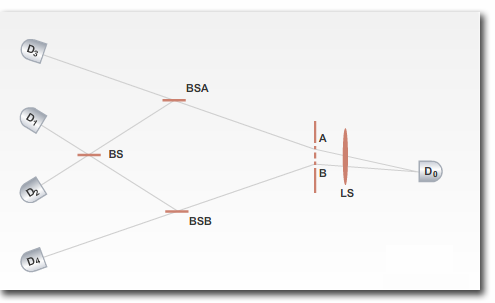
The left-side detectors record the which-way information:
- If D3 or D4 are hit, then it is known that the photons pair took respectively path A or B.
- If D1 or D2 are hit, then the path is no longer known (because D1 may be triggered both by a photon following path A through BSA-BS-D1, or by a photon following path B through BSB-BS-D1, the same happens for D2). The beam splitter BS is the eraser of the which-way information, mixing the two paths with equal probability.
The right-side detector records the interference pattern:
- When the right-side photon hits D0, the left-side photon is still in flight on a well-determined path. Accordingly, D0 does not show interference.
- The which-way information is then erased for all photons hitting D1 or D2, and not erased for all photons hitting D3 or D4.
At this point, it is possible to correlate the which-way information of these two groups of photons with the corresponding subset of photons detected at D0. We could paint eg in violet all hits at D0 corresponding to hits at D3 or D4, and we find that their distribution has no interference (according to the fact that the which-way information is known). We could then paint in red all hits at D0 corresponding to hits at D1, and in blue those corresponding to hits at D2, ie. after the erasure of the which-way information, and we find that their distribution shows two interference pattern, one with fringes for D1 and one with anti-fringes for D2, which cancel when added together.
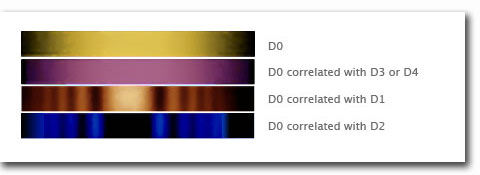
At time T0 when D0 is triggered no interference appears, since the which-way information is contained in the system at that time. At time T1, which in the experiment is some nanoseconds later but could be in principle any time later, when D1/D2/D3/D4 are triggered, we find interference in the correlated subsets of past D0 records undergoing future erasure of the which-way information.
